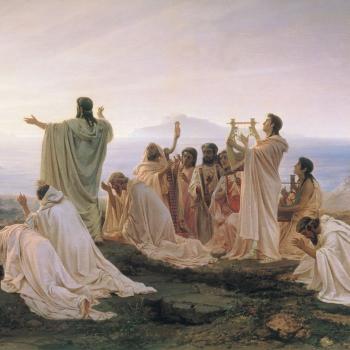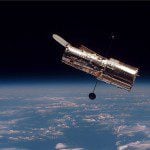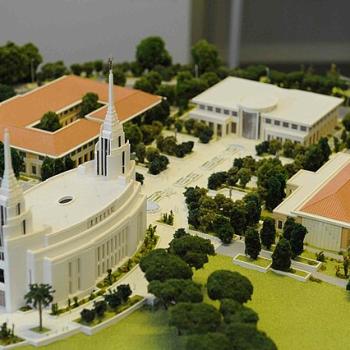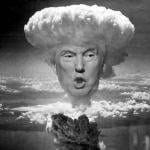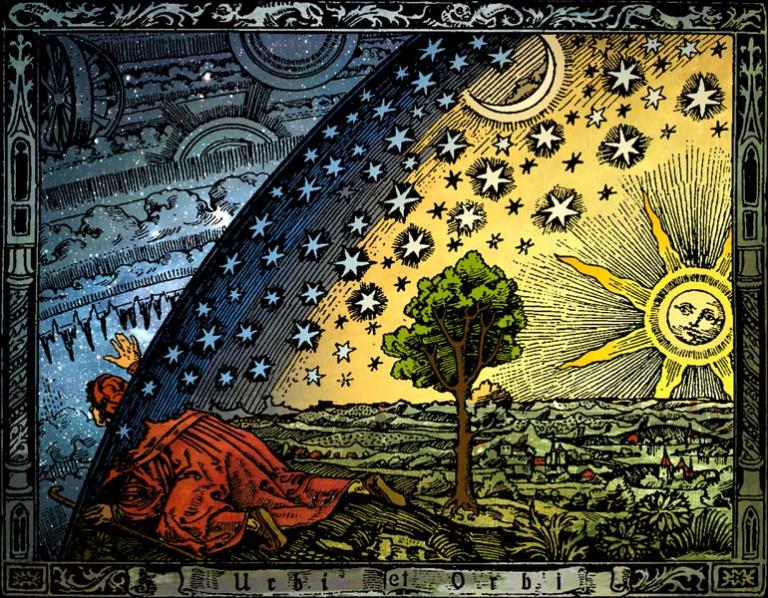
(A colorized version of the image created by Camille Flammarion [1842-1925])
Wikimedia Commons public domain image
The universe began approximately 13.8 billion years ago in a literally inconceivable explosion.
How do we know this? How was it discovered?
The so-called “Doppler effect” is relevant here, and a familiar example will explain it: If a train blows its whistle while sitting at rest in a train station, stationary listers will hear that whistle at the same pitch regardless of their location. However, as the train begins to move, those who are ahead of it will hear its whistle at a higher pitch, while listeners behind the train will hear the pitch of the whistle at a lower one. And the faster the train moves, the more pronounced will be the effect.
Anybody who has heard a train approaching and then continued to listen as it passes will have heard the difference.
The same thing, it turns out, happens with light waves as with sound waves.
Beginning with observations in 1912, the astronomer Vesto Slipher discovered that most spiral galaxies manifested notable “redshifts.” In other words, the light that reaches us from these galaxies seemed shifted toward the red end of the spectrum of visible colors. Slipher apparently didn’t conclude, at that time anyway, that this meant that they were receding from us at inconceivable speeds. Later, though, it was seen that the “redshift” was analogous to a moving train’s whistle. They appeared to be moving away.
I’ve already written here, very briefly — see “Einstein’s big mistake” — about Albert Einstein’s horrified reaction in 1917 to the implication of his equations that the universe is expanding, and about his vain attempt to evade that implication.
In 1922, though, the Russian scientist Alexander Friedmann (1888-1925) used the Einstein field equations to provide theoretical evidence that the universe is expanding. In 1927, the Belgian Catholic priest, mathematician, and astronomer Father Georges Lemaître independently reached a similar conclusion to Friedmann’s on a theoretical basis, but he also presented the first observational evidence for a linear relationship the recessional velocity of galaxies and their distance from us. Two years later, in 1929, the great American astronomer Edwin Hubble confirmed Lemaître’s findings and was able to identify an approximate correspondence between these “redshifts” and their distances from us. This was formulated as “Hubble’s Law,” which has now been officially renamed “Hubble–Lemaître’s law.”
The “redshift” was seen as powerful evidence for an expanding universe and for the Big Bang theory. Still, though, a rival cosmological theory, that of the so-called “steady-state,” continued to challenge the notion of an incredible primeval explosion. (The “Big Bang” was originally a term applied to the primordial explosion by the great British physicist Sir Fred Hoyle, who favored the alternative “steady-state” cosmology.) That rivalry was finally settled when, in 1964, the radio astronomers Arno Penzias and Robert Wilson discovered cosmic microwave background radiation that was interpreted as a kind of after-echo of the Big Bang. (This discovery won them the 1978 Nobel Prize in Physics.)
The scientific consensus today is not that the galaxies are all simply rushing away from Earth, as if we were the center of the universe. Rather, it is that they are moving rapidly away from each other, and that space itself is expanding.
So how do we come to believe, from an expanding universe, in a Big Bang? We simply roll the cosmic tape backwards. Go back in time and watch the universe contract, and contract, and contract. Eventually, we reach a point — literally, a geometric point — at which everything is inconceivably small. Then, for some reason, that point explodes — and space and time and matter all come into existence.
But what caused the explosion? Where did the “point” come from? It’s not clear that science can ever answer such questions. Why? Because physical matter, space, time, and the laws of physics all flared into existence at that point — at least, insofar as our universe is concerned. We have absolutely nothing — again, literally absolutely nothing — to go on in order to go beyond that point.
What was there before the Big Bang? Science cannot tell us. Why did the Big Bang occur 13.8 billion years ago? Why not 37.2 billion years ago, or 18.4 billion or 3.5 billion? Science cannot tell us. Why did it happen at all? Science cannot tell us. What caused it? Why is there anything? Science cannot tell us. There seems no way for science to reach beyond or behind it, any more than science can somehow reach outside our universe.
As one person has put it, it’s like a magician trying to pull a rabbit out of a hat. But without a hat. And without a magician. But, suddenly, there’s a rabbit.
Such, anyway, is how things seem to me right now.



